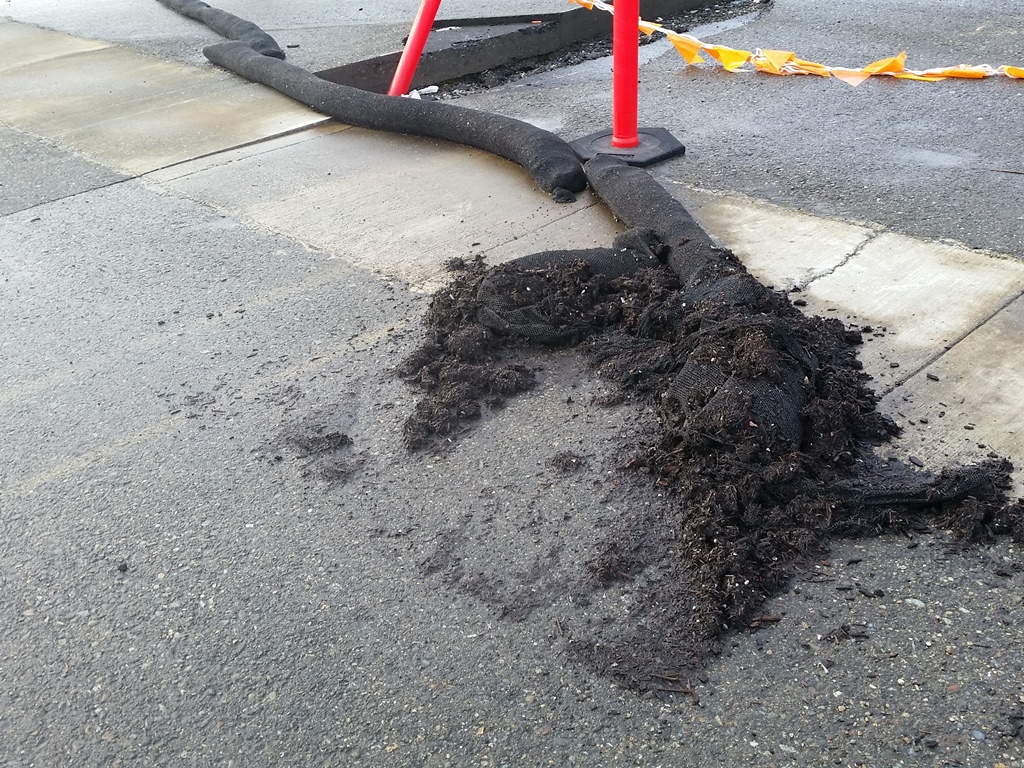
Compost socks won’t take hard use. Constant movement and driving on them tears them up so they should be used in areas that don’t get much traffic or at the base of fence and jersey barriers.

Compost socks won’t take hard use. Constant movement and driving on them tears them up so they should be used in areas that don’t get much traffic or at the base of fence and jersey barriers.
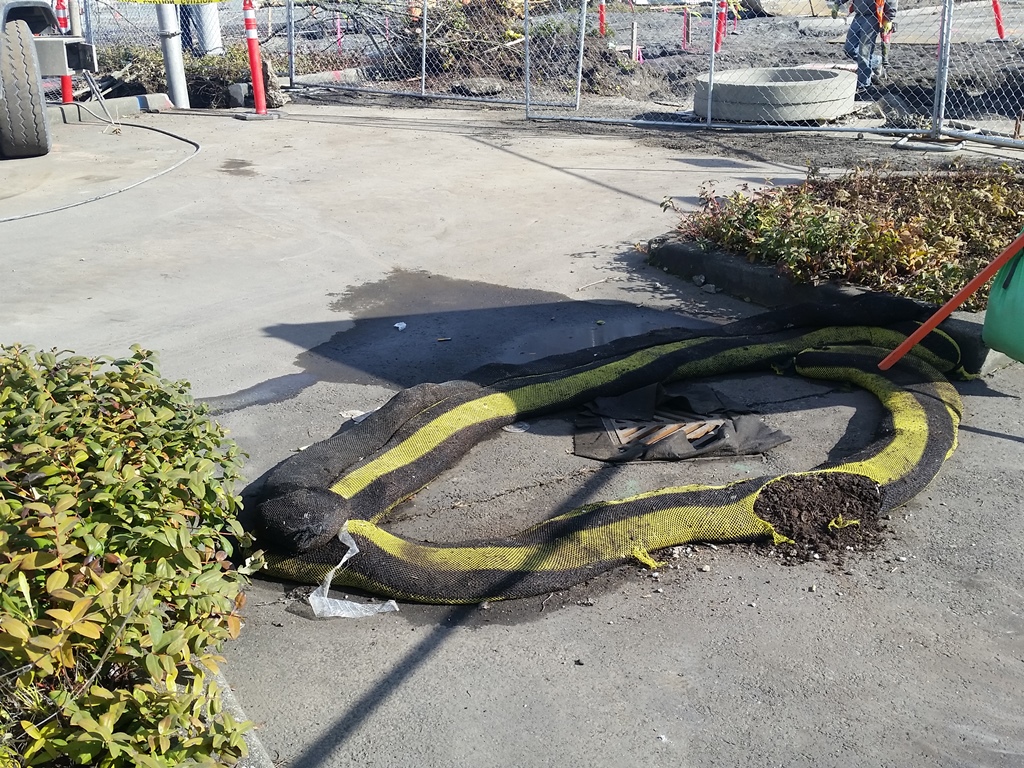
In order to contain dirty runoff, Compost sock maintenance is critical. Replace the sock or repair the tear with plastic or netting. Place safety cones or candles around the catch basin.
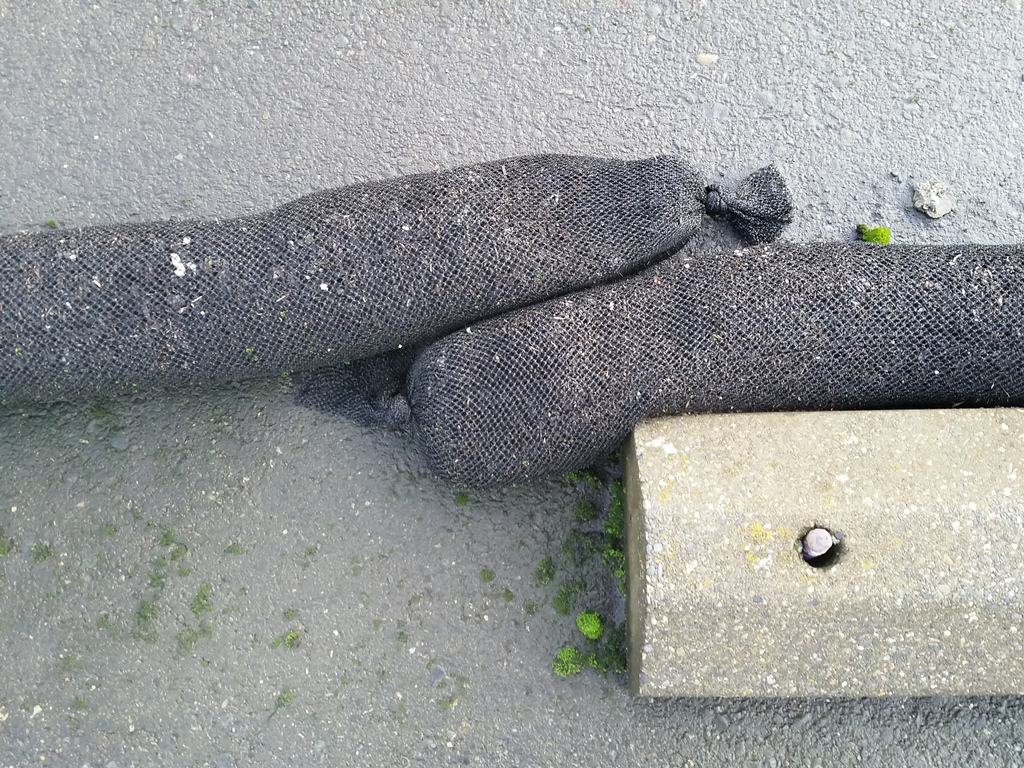
Install Compost socks with an overlap on each end to maintain a continuous berm. 8 to 12 inches works well. Consider this when figuring out how many you need to order.
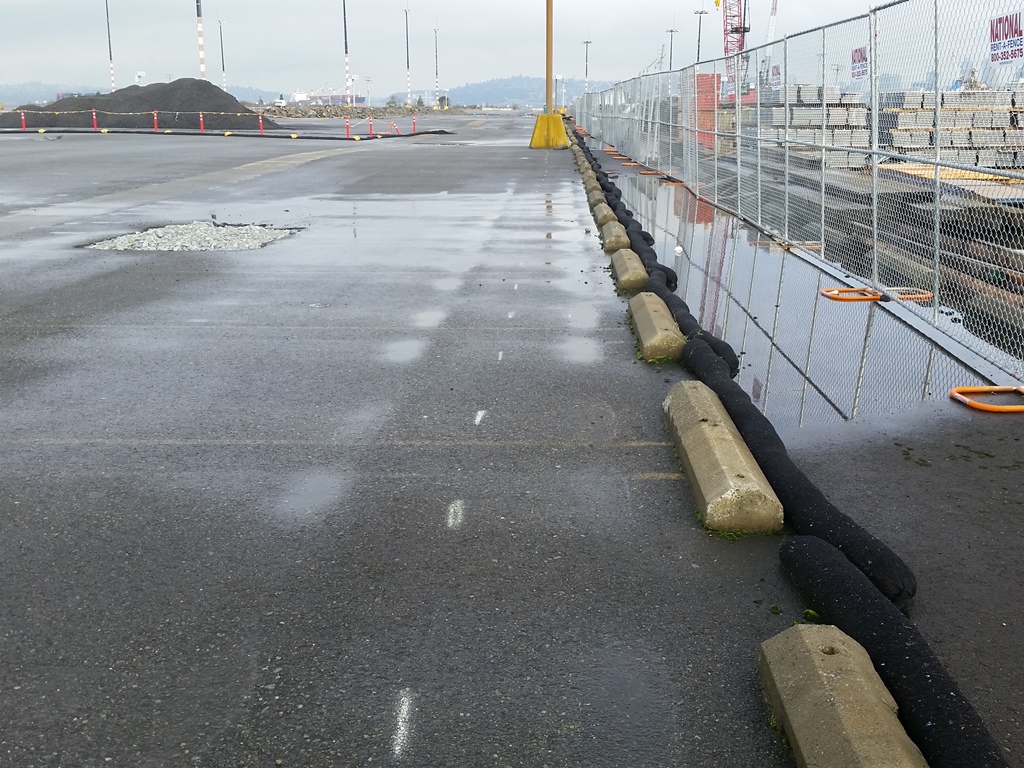
The Compost sock perimeter BMP works better than straw wattles on asphalt as they are heavier and make better surface contact.

Whenever I see something like this, it makes me think that the site owner/contractor either didn’t know what they were doing or bit off more project than they could chew, or both. These guys cleared, grubbed and graded something over 80 acres starting in late summer, failed to phase the work, failed to use soil cover practices, failed to listen to the experts and got nailed by the fall rains.
Erosion control is really about water control: reducing volume, preventing it from becoming turbid, and controlling where it goes. By the time the rains hit this project, there was too much water, it was too dirty, and there were too few options for controlling where it went.
In addition, they refused to set up a chitosan-enhanced sand filtration system to treat and discharge water; this left them no options and too much turbid water that had nowhere to go. As a result, they hammered a wetland, were fined heavily, and were shut down for months.
Silt fences are not meant to control water, convey water, filter water; they are designed to control eroded sediment. Ditches, berms (rock, gravel, triangular silt dikes, etc.) would have been better choices at this location. Not opening up so much area so late in the season would have been the best option. Their means and methods did not save them time or money.

I was just minding my own business last Friday, driving from Fred Meyer to the UPS store and passed this project. I told my wife I have to get a photo; she says okay since she knows me and my habit of stopping to take TESC photos.
I made a u -turn at the Wal Mart, drove back a block and stopped in the middle of the street to get this shot.
There is so much wrong here, where do I start? Clearly, dirt is tracked off of the project in the background, as you can see the sediment build up in the curb line. Someone told someone to put something in the swale to keep dirt out, then someone else installed this silt fence.
First off, silt fence needs to be trenched in and this just has a few rocks placed on the flap.
Second, they probably couldn’t trench this in anyway without tearing up the drainage swale.
Third, only two of the three curb cuts are backed by the silt fence.
Fourth, silt fence is a barrier, not a filter, and with the volume of water draining off the asphalt during a rain event, dirty water would just blow around and under the silt fence.
Conclusion, silt fence is never used in a water flow situation; it is only to contain eroded sediment from a sloped area. A better BMP here is a compost berm or something similar that would allow some water to pass but filter some sediment. Sand bags would work to keep everything out of the swale but then the dirty water would bypass to the next catch basin, which probably has a catch basin insert, which would collect sand and such but would not do anything for turbidity. So, what is the best BMP? Stop the !@#$ ing trackout in the first place!

We rarely use silt fence on smaller airfield projects because: the work areas are nearly flat, are surrounded by grass or pavement, the work takes a few months, usually in the summer or fall. Compost berms are frequently used to: contain water, divert water, prevent site runoff. A secondary benefit is filtration; there is some turbidity reduction. Lastly, when done,. we spread the compost out over the disturbed soil and hydroseed it, enhancing grass growth and eliminating the waste of land-filling silt fence.
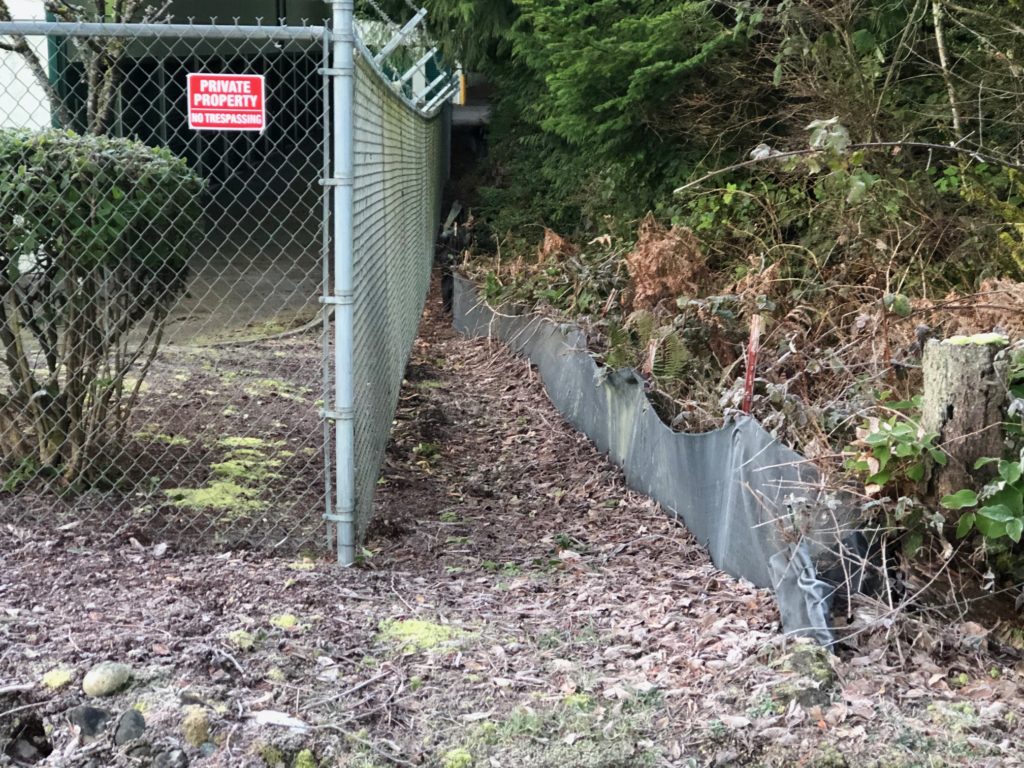
This fence was installed when a storage facility was constructed behind my house. My kids were preschoolers; now they are college age. Why was this installed since everything is level? Why was it never removed? Was this the right choice for a perimeter control BMP? Silt fence is the “go-to” perimeter control. Should it be? There are so many options available: Forest duff and vegetation berm, burlap silt fence with wooden stakes, compost berm, straw wattles, all of which could be left in place to biodegrade after the project is completed.
In this video, I show a compost berm, or sock, and how it is used to protect a catch basin.
Powered by WordPress